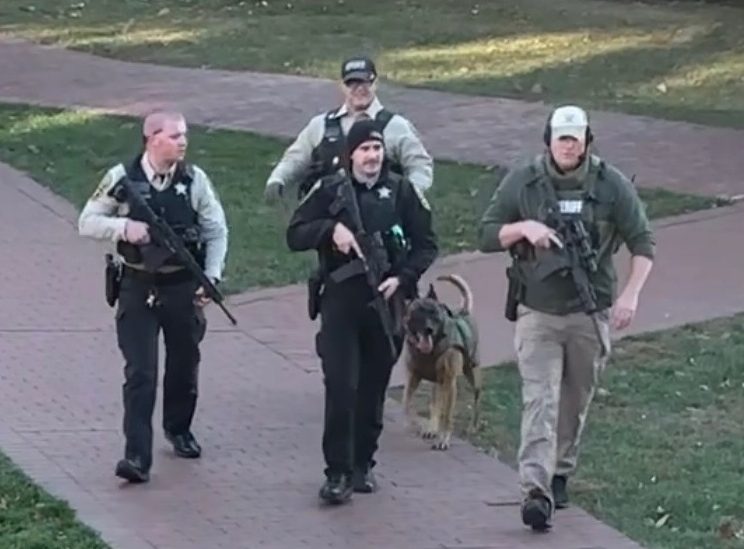I woke up this morning to a slew of texts on my phone asking me if I was safe. I rubbed my eyes, wondering why I would be unsafe on a Wednesday morning in Lexington in July, before I noticed the bomb threat notices in my inbox. After about an hour of loitering and speculating with my roommates, we decided it would be best to leave campus entirely for the day. While we felt relatively safe in third-year, we didn’t want to take any chances. Upon leaving this morning, we acknowledged that we wouldn’t be able to get back in until after campus was cleared. We had no idea when that would be.
It is easy to approach this bomb threat as a joke. This is, after all, the third one I have personally experienced on this campus. The first time I was in the middle of a performance, and when I went backstage, other actors were in a frenzy after learning about a potential bomb on campus. The show continued as President Dudley stepped out to assess the current situation.
Then, last November, a shelter in place order swept through campus. Students were locked in classrooms, dorms, and other campus spaces for nearly four hours before law enforcement announced campus was clear of any threat. I remember sitting in an office in CGL when a swat team walked in with rifles pointed at the floor. It was jarring. Afterward, students were not informed of the nature of the situation, and classes promptly resumed the next day. And now, in the middle of July when only summer research scholars, AIM scholars and Governors Language Academy participants are on campus, we are once again in danger. This time around, it feels like the Boy Who Cried Wolf; but in this day and age, I do not believe we can risk making light of any of these situations.
It is hard to imagine a place like Lexington would face these sorts of problems. Nestled in the mountains in a town with only about seven thousand people, it seems like a haven from the outside world. The campus public safety officers routinely monitors buildings, students download the LiveSafe app on their phone, blue police lights with emergency buttons are scattered throughout campus, and we even have Traveller to get us where we are going safely on a night out. It leads one to wonder, how could a place like this be dealing with problems that seem to only happen in the “outside world?”
I do not have the answer to this question, but I am alarmed and, quite frankly, highly annoyed. This is the third time I have had to call my parents to tell them that I am in potential danger. The third time I have had to check in on all my friends to make sure they are secure and safe. The third time I have had to text friends and family “I do not know anything, but I will keep you updated. For now, I am safe.” For what its worth, students do generally remain calm, either because panic is not an option, or because they do not think it is worth taking seriously. Immediately Fizz was teeming with jokes and memes about the threat, just as it did the first two times. But even amongst these jokes are concerned peers and people saying, “but seriously guys, I hope y’all are safe.”
While students receive the same message from General Alerts over and over again, each one with no more information than the last, professors and other people within the Lexington community are doing the most to ensure student safety. Professor Holly Pickett, my research advisor, has been texting my research group all day, making us check in with her so she knows our location, and even offering her house and food to students. I know of other professors who are doing the same.
Outside campus, the consensus amongst the public is that something like this is “crazy.” No one can believe something of this nature is happening again. “Crazy” because it’s real and happening here. “Crazy” because something like this is not supposed to happen here, yet it has become a regular occurrence within the past two years.
So where do we go from here? While we sit and wait this one out for the third time, I think it would be appropriate to be thinking ahead. Once this situation has been handled, and hopefully no one harmed, I think it is well past time our campus community acknowledges the full extent of these threats rather than brushing right past them. I think our campus is owed an explanation of sorts, as to why, at 8 a.m. on July 10 the lives of students, professors and others within this community have once more come to a screeching halt. When we don’t acknowledge these things, it leaves students wondering and rumors spreading. And it leaves people ready to not take the next one as seriously as the last. Why are we in danger, and how can we prevent this in the future? A conversation like this would build awareness of how to prevent these problems and how to deal with them, so that students can take proper safety precautions and are not left in the dark.








